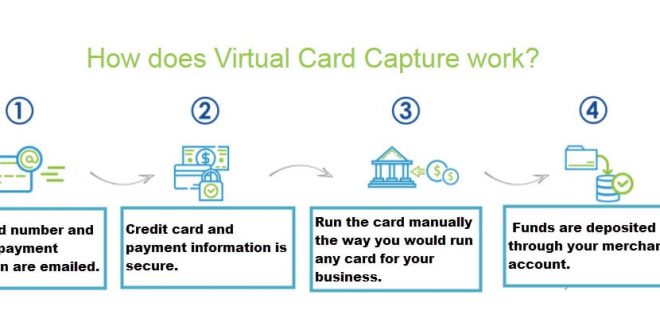When it comes to protecting your financial data, there’s no such thing as too safe. That’s where a virtual credit card might come into play.
Virtual credit cards aren’t really cards at all — at least not in the literal sense. A virtual credit card is a randomly generated number designed to protect your traditional credit card information when shopping online. Services like Bank of America’s ShopSafe® service and Virtual Account Numbers from Citi produce a temporary credit card number to help keep your actual account information more secure.
“Virtual credit cards are essentially an online version of your chip-enabled credit card,” explains Lisa Gerstner, contributing editor at Kiplinger. “Each time you use your chip card or a virtual credit card, the payment is made with unique information, which is not useful to criminals.”
As Gerstner reiterates, the main benefit of a virtual credit card is to protect your security.
In most cases, “even if a criminal accessed your virtual credit card number online, that number couldn’t be used again,” she says. “You may not need that extra layer of protection everywhere online, especially if you’re shopping with a major retailer who has layers of security. But it’s probably a good idea if you’re shopping with a less-established retailer, or if you’re not sure of that retailer’s ability to protect your information.”
In this article, we’ll dig into some key facts about virtual credit cards, including any benefits and drawbacks you should consider before using one.
Which credit card companies offer virtual credit cards?
The use of virtual credit cards is not widespread, Gerstner says, so consumers may have to search a little to find a credit card company that offers virtual credit cards as a payment option.
The major players
Two major credit card issuers, Bank of America and Citi Bank, currently offer virtual credit cards.
Bank of America’s ShopSafe® service, which is available on Visa® and Mastercard® accounts for customers who use Bank of America’s online banking service, automatically generates a virtual credit card number for online shopping.
Customers choose how long they want that number to be valid (the “valid through” date can be up to one year in the future) and can even use the virtual credit card number for recurring monthly payments.
The temporary 16-digit account number also comes with its own expiration date and security code for added security.
Virtual Account benefit:
The Virtual Account Numbers benefit from Citi, available for some Citi® credit card accounts such as the Citi ThankYou® Preferred Card, works slightly differently. It generates a virtual credit card number that can only be used with a single merchant, so it won’t work if someone steals it and tries to use it elsewhere. (Citi® cardmembers can request additional numbers to use for other merchants.)
But be aware that virtual account numbers aren’t available for all Citi® cards. Sign in to your account via Citi® Online to see if your card is eligible.
The major credit card networks Visa and Mastercard also offer their own virtual credit card services, called Visa Checkout® and Masterpass™, respectively.
Both programs allow you to create an account directly through Visa or Mastercard and tie it to your existing major credit card or debit card. Visa Checkout® and Masterpass™ accounts can only be used at participating merchants.
Both offer faster shopping in which you click on the Visa Checkout® or Masterpass™ buttons — and don’t have to fill out your credit card number or billing address — to make an online purchase. You may also have the fraud protection associated with your credit or debit card.
The new guys:
Relatively new players, such as Final and Entropay, have gotten into the virtual card business, too.
Final:
Final generates disposable credit card numbers. You can use each number just once and then automatically shut it down, or you can choose a card that can be used multiple times but only with one merchant.
Final provides real-time receipts that are pushed to your phone to make it easier to monitor your purchases. The Final credit card has no annual fee and offers 1 percent cash back on all purchases.
Heads up: The card’s website clearly states that the Final card “is reserved for those with good to excellent credit backgrounds.” It also charges fees that include a 2.5 percent foreign transaction fee and a $5 charge for paper copies of documents that have already been provided.
Entropay:
Entropay doesn’t technically offer a virtual credit card — it’s more like a virtual prepaid card designed to help you make secure, private payments online.
The U.K.-based company’s prepaid credit card offers similar privacy to a virtual credit card, but without any interest payments or a credit check and without a physical credit card being issued.
U.S. residents can sign up for an Entropay Classic account and select U.S. dollars as their currency (each Entropay account operates in only one currency, and can’t be changed after you make your choice). However, be aware that certain fees, such as a foreign exchange fee on purchases and an account closing fee, may apply.
Virtual cards are also used by businesses to allow employees to make online purchases with a higher level of fraud protection. U.S. commercial virtual card spend is expected to be $132 billion in 2017, according to First Annapolis Consulting, a company that provides consulting services related to electronic payments.
How do virtual credit cards integrate with mobile wallets?
Most consumers have yet to embrace the use of mobile wallets. A 2016 Accenture survey of 4,000 consumers in North America found that just 19 percent of consumers use their phones to pay for in-store purchases. However, mobile wallets are anticipated to expand in use over the next few years. Accenture’s study found that more than half (56 percent) of consumers are at least aware they can use a smartphone to make purchases.
Some virtual credit cards, such as Bank of America’s ShopSafe® service, can only be used online, while others can connect to a mobile wallet for cashless in-store shopping.
For example, Google’s Android Pay offers a Visa Checkout® option to their consumers for online purchases, and you can make in-store payments with Mastercard’s Masterpass™ app for Android™ phones. (You may need to download a special app to integrate your virtual credit card with a mobile wallet.)
What are some potential drawbacks to virtual credit cards?
While virtual credit cards do offer another layer of security, there are a few reasons consumers may be slow to use them.
“There’s a possibility that getting a refund or returning items could be more complicated with a merchant, especially if you have to confirm your credit card number later,” Gerstner says.
In addition, you could run into complications if you book a hotel or a rental car with a virtual credit card number and need to show that card in person.
And then there’s the issue of fraud. Just because virtual credit cards may boost your security doesn’t mean you should let down your guard.
“If you’re using a virtual credit card from a third-party company, I would make sure that their fraud protection is as robust as any protection you may get with your credit card,” Gerstner says.
As we mentioned in our article on how to guard against credit card fraud, there’s no such thing as “fraud-proof.” Most experts think of card security in terms of layers — the more the better.
Fraud protection without a virtual credit card
While virtual credit cards can make it harder for thieves to steal your credit card number, most credit card companies already have several other security procedures in place.
In the eyes of some, these procedures make virtual credit cards more of a hassle than they’re worth. Discover, for example, dropped its virtual credit card program after improving security across its cards.
“As we continued to add new layers of fraud detection and prevention and authentication across our portfolio of card products, we decided to discontinue our Secure Online Account Numbers Program,” says Laks Vasudevan, vice president of products & innovation at Discover Financial Services.
Some of Discover’s new security enhancements, Vasudevan says, include a $0 fraud liability guarantee and Freeze it® on/off switch, which allows customers to temporarily freeze their account via Discover’s mobile app or website.
Bottom line
Virtual credit cards may offer an extra layer of security, but using one doesn’t give you license to let your guard down.
Gerstner recommends checking to make sure any fraud protection coverage on your virtual credit card, no matter who issues it, is the same as any protection on your other credit cards.
In addition, she says it’s a good idea to regularly check your credit card and bank statements as well as your credit reports.
“While virtual credit cards may not always be necessary, they do offer another preventive layer of protection for consumers,” she notes.
Oh, and one last thing: Even though the card is virtual, the bills won’t be. So be prepared to pay off your balance in full and on time if you want to steer clear of interest charges and other fees
 Virtual credit card For The Virtual World
Virtual credit card For The Virtual World




